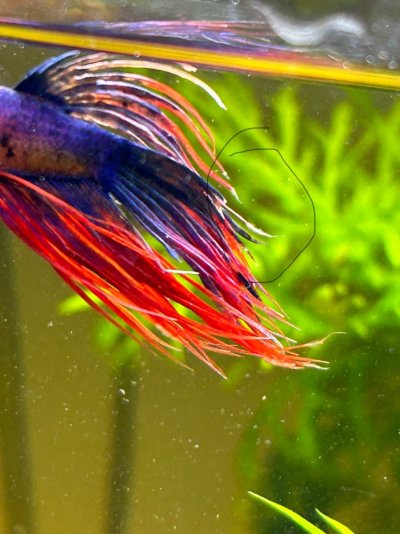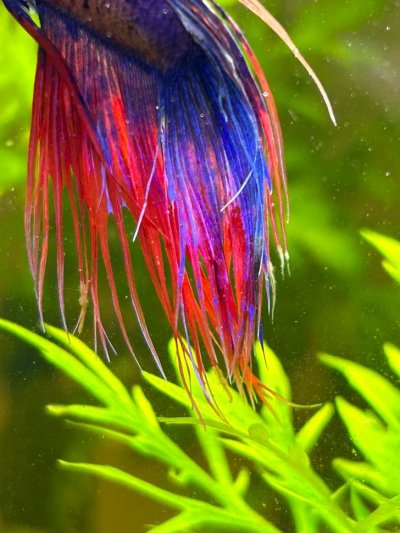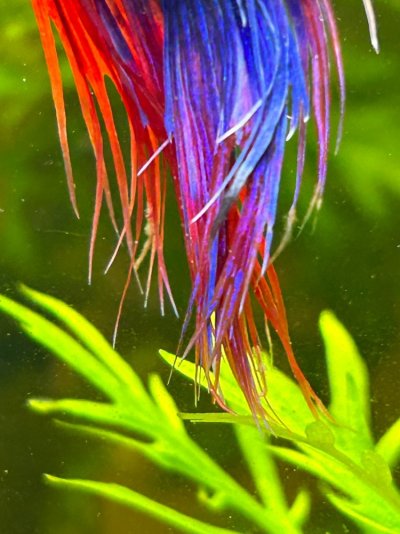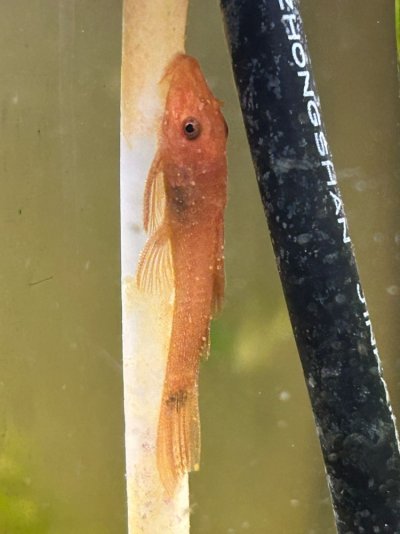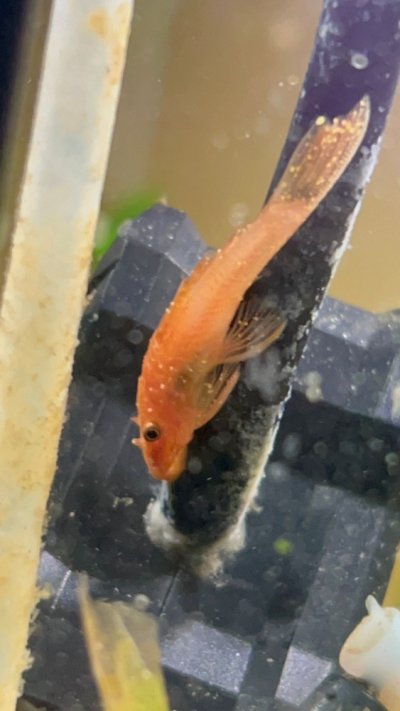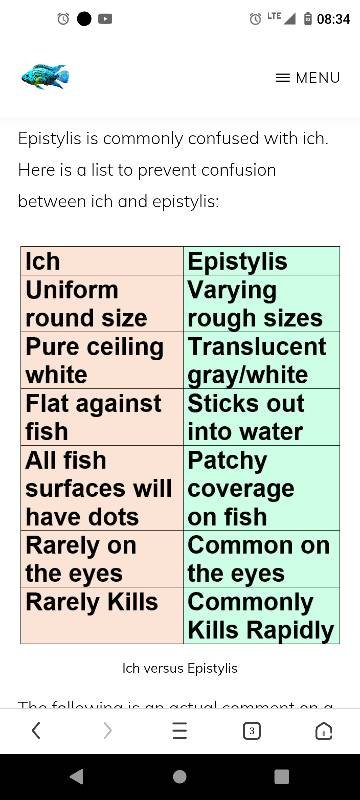SerenaMacarena
Aquarium Advice Newbie
- Joined
- Oct 4, 2023
- Messages
- 4
Strap in, this is going to be a bit of a long one. Last week i introduced this cute lil baby super red pleco to my planted 20 gallon betta tank. A week later (2 days ago) I notice that the new pleco is riddled with white spots all over his body, and some had started to spread onto my Betta's fins. After extensive research, what I initially thought was ich that was in my tank, was actually epistylis! responders on reddit have noticed it. They said to use Ich-X, but that's not readily available in Montreal. I researched what the ingredient is that's necessary to rid this epistylis, and I learn that it's Malachite Green. I went the next day and purchased a bottle of Malachite Green by Kordon. I added Fluval Aquarium Salt to the tank, 2TBSP of it, and the recommended dosage of the Malachite Green. Today as I was doing the 25% water change and retreating the water, I noticed that some of the fins of my crowntail betta are turning white and cloudy at the tips and looks like they're melting????
I did a water change not long before seeing this incident, and my ammonia, nitrite, and nitrate levels were all in the clear (i wouldn't say complete 0 for nitrates as that's unrealistic but well below 20). I had bought some new plants recently and the dreadul transition phase of the plants melting their leaves off and stuff may have caused a spike in the bio load. But it is odd that I hadn't seen any fin melting up until today when starting treatment. Could it really by fin rot and my ammonia levels had truly spiked and I didn't notice it? Or am I dosing something wrong with the meds?
Also, if ther's any tips or advice anyone would like to share in regards to treating epistylis (or ich, still not 100% that it's epistylis or ich, the medicine says it cures both so there's that)
I did a water change not long before seeing this incident, and my ammonia, nitrite, and nitrate levels were all in the clear (i wouldn't say complete 0 for nitrates as that's unrealistic but well below 20). I had bought some new plants recently and the dreadul transition phase of the plants melting their leaves off and stuff may have caused a spike in the bio load. But it is odd that I hadn't seen any fin melting up until today when starting treatment. Could it really by fin rot and my ammonia levels had truly spiked and I didn't notice it? Or am I dosing something wrong with the meds?
Also, if ther's any tips or advice anyone would like to share in regards to treating epistylis (or ich, still not 100% that it's epistylis or ich, the medicine says it cures both so there's that)

